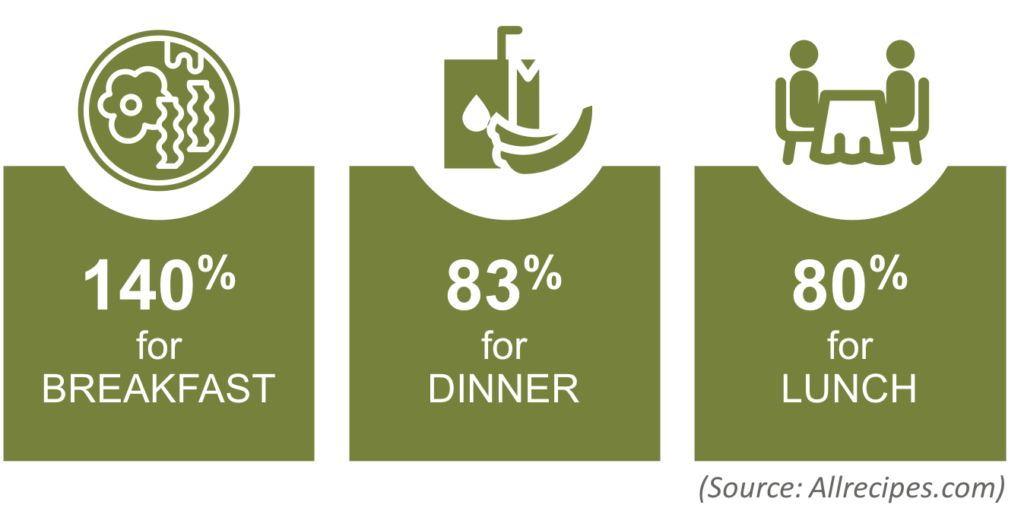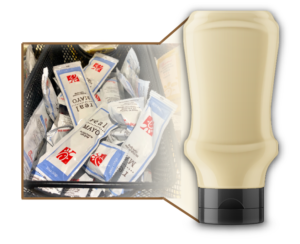Consumer eating habits have changed in the past 10 weeks. Technomic projected in late March that the foodservice industry – those charged with preparing meals outside the home – could be facing as much as a 27 percent revenue decrease for 2020 compared year over year to 2019. These changes in consumer eating led those in the foodservice industry to reduce and cancel purchases of egg products resulting in significant social, economic and environmental (triple-bottom-line) impacts on our local communities and around the country.
Canceled events and conferences led to fewer meals being served by the Food & Beverage part of the hospitality industry. Less dining guests led to menu adjustments across the board from your everyday fast food to sit down dining. School closures led to breakfast no longer being served in districts across the country. While McDonald’s dropping all-day breakfast or a local restaurant not offering a favorite dish during this period may be a minor inconvenience to many, it has created significant triple-bottom-line impacts on the egg industry.
Recipe Searches Increase with Home Food Consumption

As we’ve mentioned in the first two articles in this four-part series, the egg industry is divided into two sectors: shell eggs and egg products. Shell eggs have had their share of challenges, with home consumption growing 220 percent. However, this article will focus more on the foodservice and egg product challenges in the marketplace today.
The wholesale market for egg products looks considerably different than shell eggs. Egg products are pasteurized and sold in a variety of refrigerated, frozen and dried forms to meet the needs of quick-service restaurants, institutions, hospitality services and food manufacturing. To understand the scope, we must recognize that eggs aren’t just used by these customers as “eggs” for breakfast or salads, but rather they are also regular ingredients in sauces, dressings, pasta, baked goods and more.
Some in egg product production serve only one or two of these segments, while others offer a variety of products, helping to insulate their business when unforeseen circumstances arise.

For many in the egg product sector, the market may not have evaporated over the last several months, but rather shifted end-use purpose. For example: where restaurant-style individual servings of sauces, dressings and mayonnaises once drove production, retail demand has found a way to fill some of the voids with many consumers stocking their pantries with sauces, salad dressings and mayonnaises. A temporary market shift but one welcomed by those filling those needs.
Those who serve both the liquid and dried egg markets were also able to shift some product to meet changing demands. Spring and Summer are normally a transition period for dried eggs, as food manufacturing demand traditionally falls during these months. The dried egg product, which is used in products such as pasta, soups and cake mixes, has remained steady in demand during COVID-19 as manufacturers attempt to meet the new consumer grocery demands of products in the middle of the store.
Those unable to shift production into differing segments or products were faced with tough decisions, keep feeding birds with no end market, or … the alternative? One choice was continuing to feed the hens and deliver truckloads of liquid egg products to landfills. Another choice was molting. A process that takes the birds out of production for 8 weeks. This option allows producers to “wait and see” how the market plays out over two months and then choose to re-enter production or depopulate the flock. For others, the financial implications of feeding birds with no market delivered severe economic impacts to their balance sheet and led to early euthanasia and mass depopulation for millions of hens.
How many birds have been taken out of production? At this point, we do not know. USDA reports can provide a clearer picture, but still not a crystal ball.
What we do know is this: the recovery time frame will not be a flip of a switch. As restaurants come back online, egg product producers are seeing an uptick in demand from their loyal customer base. However, the requests are much less than pre-COVID-19 numbers. At this point, the market demands can be met. But, that can only last so long. Delays from bringing a bird back from molting, as well as the delays in replenishing flocks – shortage of pullets (immature hens), plus 16-20 weeks until egg production, will impact the foodservice industry in months to years ahead.
Throughout this series, The Context Network will continue to dive deeper into perspectives found on these issues throughout the supply chain[1]. As we build the story, we continue to identify additional needs from the industry as a whole. If you’re interested in working with Context to work through those issues, please contact me at matt.sv@contextnet.com
[1]United Egg Producers, Egg Industry Center and Oskaloosa Foods contributed to this series.


